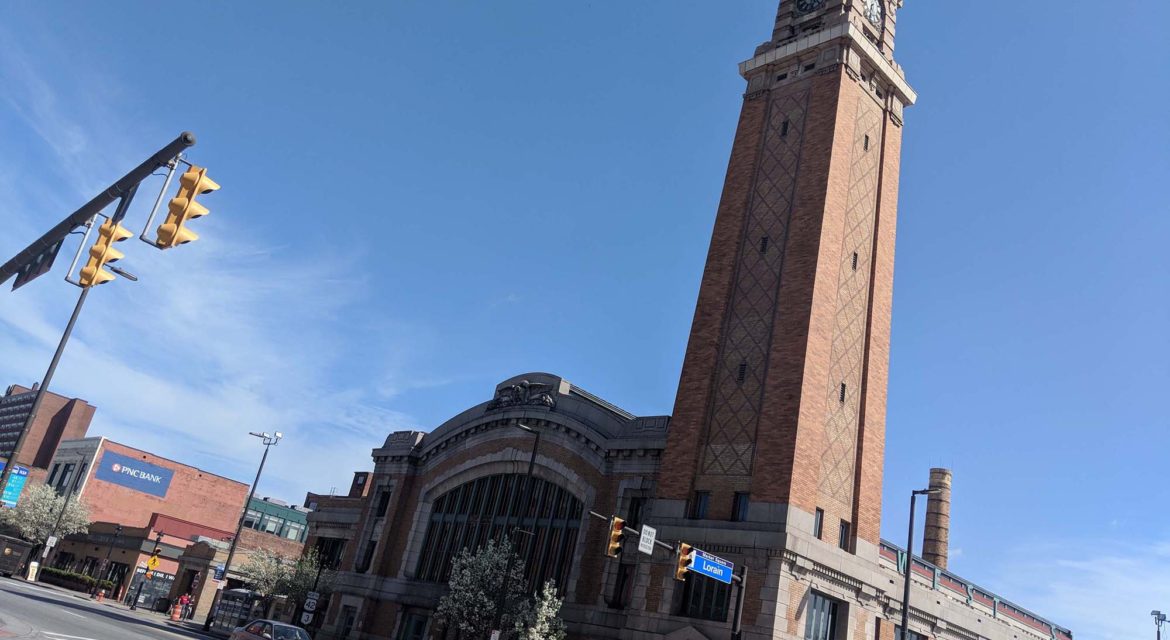 The West Side Market is the oldest continuously operating municipally owned market in Cleveland, Ohio, but that history is just part of the reason it has become a key feature on many tours of the city. Located in the Ohio City neighborhood, the Market has turned into an attraction for both residents and tourists that seek to do everything from buy food products that are only available in Cleveland to experience what has become a monument to and for an entire city.
The West Side Market is the oldest continuously operating municipally owned market in Cleveland, Ohio, but that history is just part of the reason it has become a key feature on many tours of the city. Located in the Ohio City neighborhood, the Market has turned into an attraction for both residents and tourists that seek to do everything from buy food products that are only available in Cleveland to experience what has become a monument to and for an entire city.

A Center of the Ohio City Community
The Pearl Street Market, located across the street from the current West Side Market, opened in 1840. It became a center of the Ohio City community for decades but eventually outgrew the space. That spurred the purchasing of land across the street from the Pearl Market site in 1902, where the West Side Market building was eventually constructed.
 The current West Side Market building was finished in 1912. The 137′ tall clock tower is the most notable feature of the building, but the 44-foot high Guastavino tile vaulted ceiling is just as notable. The interior concourse has space for almost 100 stalls, while an 85-stall arcade wraps around the building. A complete list of the Market’s current vendors is readily available.
The current West Side Market building was finished in 1912. The 137′ tall clock tower is the most notable feature of the building, but the 44-foot high Guastavino tile vaulted ceiling is just as notable. The interior concourse has space for almost 100 stalls, while an 85-stall arcade wraps around the building. A complete list of the Market’s current vendors is readily available.
The market offers a wide variety of fresh meats, cheeses, poultry, seafood, produce, baked goods, spices, ethnic specialties, prepared foods, flowers, and much more. This variety is why a large portion of residents do a large portion of their shopping at the Market, but it also attracts visitors for similar reasons.
This variety and uniqueness have allowed the Market to become an essential element of the neighborhood and city and helped to establish it as a monument that has created a notable cultural and economic impact on the region.

Cleveland’s Public Market
The West Side Market has become an integral part of the Ohio City neighborhood as well as the city of Cleveland along with the entire Northeast Ohio region. This economic impact can be seen directly and indirectly. Maps and tours feature the Market in an especially prominent manner, providing numerous businesses with an attraction that they can showcase for visitors. Vendors also rely on this influx of tourists, to the point that planned tours, charter buses and schools need to make arrangements with the Market Office for their visits. The West Side Market also accepts direct support from the community.
 The cultural impact of the West Side Market on the entire region is something that has been recognized in small and large ways. On December 18, 1973, it was added to the National Register of Historic Places, while the September 2010 issue of Food Network Magazine, mentioned that the West Side Market was one of America’s “Best Food Lovers’ Market. Additionally, in 2008, it was designated as one of “10 Great Public Places in America,” by the American Planning Association.
The cultural impact of the West Side Market on the entire region is something that has been recognized in small and large ways. On December 18, 1973, it was added to the National Register of Historic Places, while the September 2010 issue of Food Network Magazine, mentioned that the West Side Market was one of America’s “Best Food Lovers’ Market. Additionally, in 2008, it was designated as one of “10 Great Public Places in America,” by the American Planning Association.
All of this activity and interest is the result of the engagement the Market has received from the community, and with regular hours five days a week, that community can experience the market in multiple ways at numerous times throughout a given week. There are also numerous items for sale at the Market that can only be found in Cleveland, which further contributes to the unique appeal that both residents and visitors recognize and embrace.
By becoming “Cleveland’s Market”, the West Side Market has been able to turn itself into a monument that provides a unique shopping experience for both residents and visitors that has and continues to resonate in multiple ways.

Only in Cleveland
 Markets of all types and sizes can be found throughout the city, state, country and world, but the history and experiences that are an inherent part of the West Side Market have made it more than just a market. Like the nearby Christmas Story House, a trip to the West Side market is something that can only happen in Cleveland. By providing such a unique experience, the West Side Market has become a monument for the city as a whole.
Markets of all types and sizes can be found throughout the city, state, country and world, but the history and experiences that are an inherent part of the West Side Market have made it more than just a market. Like the nearby Christmas Story House, a trip to the West Side market is something that can only happen in Cleveland. By providing such a unique experience, the West Side Market has become a monument for the city as a whole.

